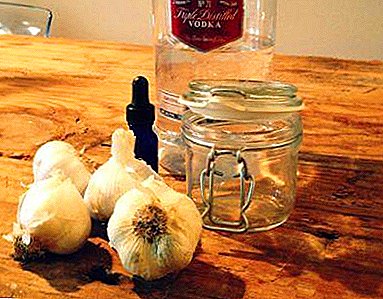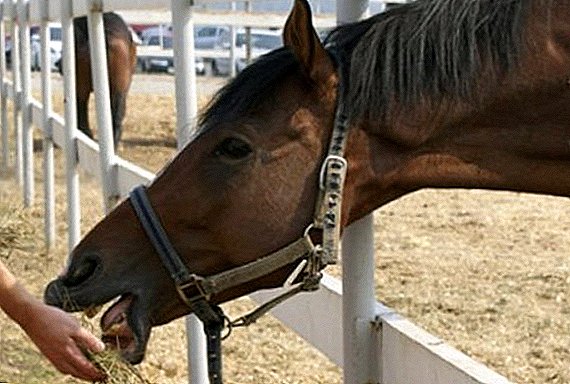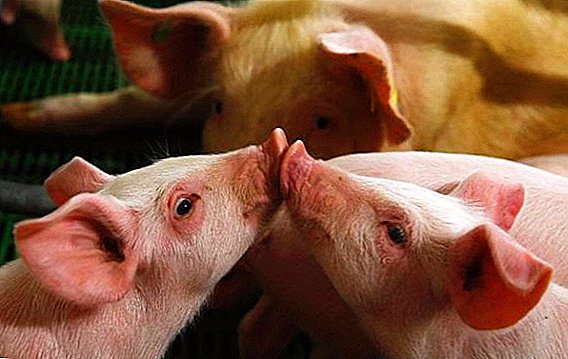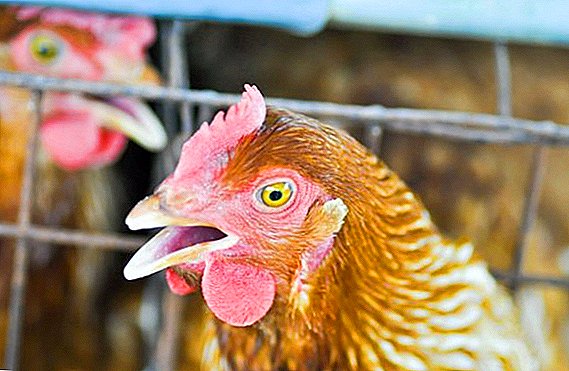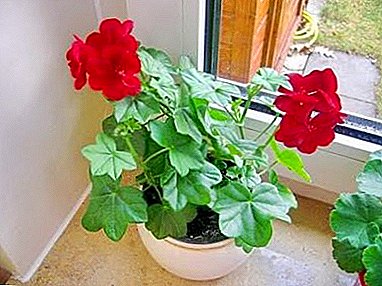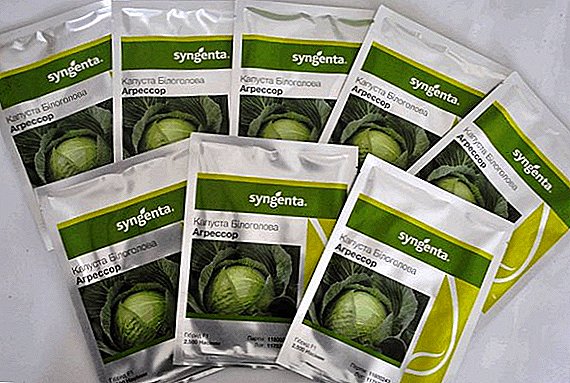 The range of modern incubators includes both small devices designed for the withdrawal of small batches of chickens, and industrial models with a output of up to 16,000 pieces. The new Russian incubator Egger 88 is designed for small private farms and personal farms and is designed for the simultaneous withdrawal of 88 chickens. This is a great solution for those who do not need large and expensive models.
The range of modern incubators includes both small devices designed for the withdrawal of small batches of chickens, and industrial models with a output of up to 16,000 pieces. The new Russian incubator Egger 88 is designed for small private farms and personal farms and is designed for the simultaneous withdrawal of 88 chickens. This is a great solution for those who do not need large and expensive models.
Description
Egger 88 is a small-sized incubation apparatus that can be installed in any room with a temperature above 16 ° С and humidity not lower than 50%. Designed for breeding poultry - chickens, turkeys, ducks, hawks, geese, quail.
Both professional poultry farmers and highly qualified engineers took part in the development of the model.
The device is created from high-quality components and electronics, taking into account modern technological solutions in the field of hatching chicks. The functionality of the device is fully consistent with industrial analogues.
The incubator belongs to the devices of the combined type - it can perform the functions of pre-incubation and a discharge chamber. To convert the pre-incubator to the hatcher, it is enough to lay the eggs out of the trays in the false-bottom of the chamber.  After laying eggs, the device works in automatic mode. Control and adjustment of parameters are carried out using special sensors.
After laying eggs, the device works in automatic mode. Control and adjustment of parameters are carried out using special sensors.
Check out the technical specifications of household incubators such as "Egger 264", "Kvochka", "Nest 200", "Sovatutto 24", "Ryabushka 70", "TGB 280", "Universal 55", "Stimul-4000", " AI-48 "," Stimul-1000 "," Stimul IP-16 "," IFH 500 "," IPH 1000 "," Remil 550TsD "," Covatutto 108 "," Titan "," Cinderella "," Janoel 24 " , "Neptune".
Egger 88 has all the functions of a professional incubator:
- automatic regulation of temperature and humidity;
- exact observance of the set values;
- availability of automatic egg rotation;
- high-quality ventilation, heating and humidification system.
 The advantages of the device:
The advantages of the device:- small dimensions;
- device mobility;
- thoughtful design;
- high-quality components;
- high energy efficiency;
- maximum automation;
- easy maintenance;
- availability of components.
Did you know? Ancient Egypt is considered the birthplace of artificial incubators. Information about these devices was recorded by Herodotus during a trip to Egypt. Even now, in the vicinity of Cairo, there is an incubator, which is 2000 years old.
The incubator does not take up much space and weighs about 8 kg. Incubator assembly - Russian, from imported components. The manufacturer has a warranty period, the sale of parts to customers at producer prices. The deadline for receipt of the necessary parts - a few days, depending on the region of delivery.
Video: Egger 88 Incubator Review
Specifications
The incubator consists of:
- camera housing;
- electronic control unit;
- incubation trays - 4 pcs .;
- ventilation systems;
- heating systems;
- humidification system with a bath of 9 liters of water.
To move the incubator, there are 3 handles on the cover and walls. In order to be able to convert the preliminary chamber into the hatcher, the model is equipped with a special mat that fits on the false bottom, it houses eggs. The cover and side wall of Egger 88 are completed with clips.
The size of the model is 76 x 34 x 60 cm. The case is made of aluminum profile and sandwich panels with a thickness of 24 mm. Sandwich panels are made of PVC sheets, between which there is insulation - polystyrene foam.  Body properties:
Body properties:
- small weight;
- high-quality thermal insulation (not less than 0.9 m2 ° C / W);
- good sound insulation (at least 24 dB);
- high moisture resistance;
- good wear resistance and impact resistance.
We advise you to read about how to choose the right household incubator.
Production characteristics
Incubation trays contain:
- 88 chicken eggs;
- 204 quail;
- 72 duck;
- 32 goose;
- 72 turkey.
Video: New Developments for Egger 88 Incubator
Incubator Functionality
The main element of the electronic unit is the controller. He performs management:
- humidity;
- a roll of eggs;
- external ventilation;
- heating system;
- emergency modes of ventilation.
Humidity inside the unit can be adjusted from 40 to 80% with an accuracy of 1%. Humidity is provided by the evaporation of water, which is supplied from a special tank.
Read more about how to make the incubator device yourself from a refrigerator, thermostat, ovoscope and ventilation for the incubator.
Capacity - 9 liters; it is sufficient to provide automatic control of the parameter for 4-6 days, depending on the selected indicators. Maintained air temperature - up to 39 ° C. Adjustment accuracy - plus or minus 0.1 ° С. 
Optimum performance for chicken eggs:
- humidity - 55%;
- temperature - 37 ° C.
Important! During the incubation period, the air temperature varies slightly - from 38 ° C in the first days to 37 ° C at the end of the period. But the humidity has a special schedule: at the beginning and during the process, it is 50-55%, and during the three days preceding the conclusion, it should be no less than 65-70%.
Rotation of trays is carried out mechanically. Trays inside the case are in constant motion and slowly rotate. Within 2 hours, the trays are rotated 90 degrees from one side to the other.
The fans are located in the lower part of the installation, they take air from the chamber and take it out. At the top of the chamber are air intakes. In the presence of a separate fan for purging the camera on a timer, which can be used instead of the main in case of emergency. 
Advantages and disadvantages
The advantages of Egger 88 include:
- the possibility of incubating eggs of different bird species;
- the combination of the functions of the incubation and excretory devices;
- ease of moving the model and the possibility of placing on a small space;
- simultaneous incubation of the average batch of eggs;
- good thermal insulation properties;
- maximum automation of processes: control of ventilation, humidity, temperature, automatic rotation of trays;
- high impact resistance of the hull;
- robust design, assembled from high-quality components;
- optimized shape and size of the structure, developed taking into account the opinions of both engineers and professional poultry farmers;
- installation is easy to maintain and maintain.
The disadvantage of the device can be considered its small capacity and limited functionality, but all this corresponds to its purpose: a simple compact model for small farming. 
Instructions on the use of equipment
Egger 88 can be placed in a room with an air temperature not lower than 18 ° C. The thermal conductivity of the sandwich panels of the housing complies with GOST 7076. Fresh air is needed in the room with the incubator, since it participates in the air exchange processes inside the incubation chamber. Do not install the unit in a draft or in direct sunlight.
Did you know? The nestlings of the royal albatross hatch longer than other birds - they need 80 days before birth.
Preparation and incubation consist of the following stages of work with the equipment:
- Preparing the device to work.
- Lay eggs in the incubator.
- The main workflow is incubation.
- Re-equipment of the camera for the withdrawal of chicks.
- Chick removal procedure.
- Care of the device after the withdrawal.
Video: Egger Incubator Setup
Preparing the incubator for work
For successful hatching of chicks, besides an incubator, it is also desirable to have:
- uninterruptible power supply;
- 0.8 kW electric generator.
Modern generators can be diesel, gasoline or gas. The generator will protect you from possible interruptions in the operation of power grids. The uninterruptible power supply unit is not a mandatory element, but it is recommended to protect the electronics from electrical power surges and is used to smooth out peak voltages.
Before work you need:
- Wash the device with soapy water and a sponge for disinfecting surfaces, disinfect, dry.
- Check the condition of the power cord and the tightness of the case. Using obviously defective equipment is prohibited.
- Fill the humidification system with warm, boiled water.
- Incorporate an incubator into operation.
- Check the operation of the turning mechanism.
- Check the operation of the ventilation system, temperature and humidity control.
- Pay attention to the correctness of the sensor readings and their compliance with real values.
 If problems are observed in the operation of the systems - contact the service center.
If problems are observed in the operation of the systems - contact the service center.Egg laying
Fix trays for a specific type of eggs (chicken, duck, quail).
Read more about how to disinfect the incubator before laying eggs, how to disinfect and wash eggs before incubation, how to lay eggs in an incubator.
Requirements for eggs:
- For incubation take clean, unwashed eggs of the same size.
- Eggs must be free of defects (thin shell, displaced air chamber, etc.) - checked by an over-sight.
- Egg freshness - no later than 10 days from the moment of laying.
- Stored at a temperature not lower than 10 ° C.
Before putting the eggs in the incubator, warm them to room temperature at 25 ° C. After the eggs are laid in trays, the lid is closed and the parameters of the Egger 88 are set. The temperature (37-38 ° C), humidity (50-55%) and ventilation time must be set.
Video: preparing eggs for laying in an incubator Now you can close the incubator and turn it on. Then you need to make sure that the device works in the specified mode. If the incubation of eggs of rare breeds, then you need to consider that such eggs are not rejected because of their high value.
Important! The difference between the temperature of eggs and the temperature in the chamber can lead to the formation of condensate, which contributes to the development of microbes and mold.
When the shells are contaminated, the dirt is scraped off with a knife. Chicken eggs are laid for incubation in the evening - so that the process of hatching of chickens begins in the morning and the whole brood has had time to hatch during the day.
Incubation
In the process of incubation requires periodic monitoring of the systems - humidity, temperature, air, turning eggs. It is recommended to check equipment operation at least 2 times a day - in the morning and in the evening.  In case of deviations from normal temperatures, disturbances in the development of the embryo and developmental delay are possible. Violations in the moisture regime lead to a thickening of the shell, because of which the chicken will not be able to hatch. In addition, in dry air, chickens are small. Excessively humid air may cause the chicken to stick to the shells.
In case of deviations from normal temperatures, disturbances in the development of the embryo and developmental delay are possible. Violations in the moisture regime lead to a thickening of the shell, because of which the chicken will not be able to hatch. In addition, in dry air, chickens are small. Excessively humid air may cause the chicken to stick to the shells.
Incubation time:
- chickens - 19-21;
- quails - 15-17;
- ducks - 28-33;
- geese - 28-30;
- turkeys - 28.
Did you know? If you need to lay on incubation unequal in size eggs, then first lay large (more than 60 g), after 4-5 hours medium and after 7-8 hours small. This will ensure the simultaneous breeding process.Eggs are periodically checked with an ovoscope - 2-3 times per period.
Video: egg incubation
Hatching chicks
3-4 days before the end of the incubation, the eggs from the incubation trays are laid on a special mat on the false-bottom of the chamber. To turn the eggs in this period is prohibited. Hatching chickens start on their own.
After the chicken has hatched - it must dry before it is removed from the incubator in the manger. A dried and active chicken must be taken out, as it will prevent other chicks from hatching.
Find out what to do if a chicken cannot hatch itself.
If the process is delayed and only a part of the chickens are hatching, and the other is late - increase the temperature in the chamber by 0.5 ° C, this will speed up the process. 
Possible problems and solutions:
- The chicken has broken through the shell, it beeps quietly, but it has not come out for several hours. Such a chicken takes time to get out. He's just weak and gets out slowly.
- The chicken has broken the shell, does not come out and squeals nervously. Perhaps the crust has dried and does not allow it to get out. Dampen your hands with water, take out the egg and lightly wet the foil. This will help the baby.
- If a piece of shell hangs on the selected chicken, lightly moisten it with water so that it can fall away.
Important! You can not independently try to remove the shell. You may accidentally damage the chicken.After all the chicks have hatched, the shells are removed. The mat is also removed and washed in a soapy solution. The incubation chamber is also washed with soapy water and disinfected.

Device price
Price Egger 88 is 18,000 rubles.
findings
The Egger 88 Incubator has an optimal price / quality ratio in its class. The quality and degree of automation correspond to industrial analogues. The device is distinguished by modern design, reliability of components, high energy efficiency. If you have any problems you can get advice from the company's service center.
Artificial incubation of young animals is an ideal way to breed poultry, and Egger 88 will help you to cope with this task. There are practically no similar devices designed for the needs of a small farm and capable of competing with it.


